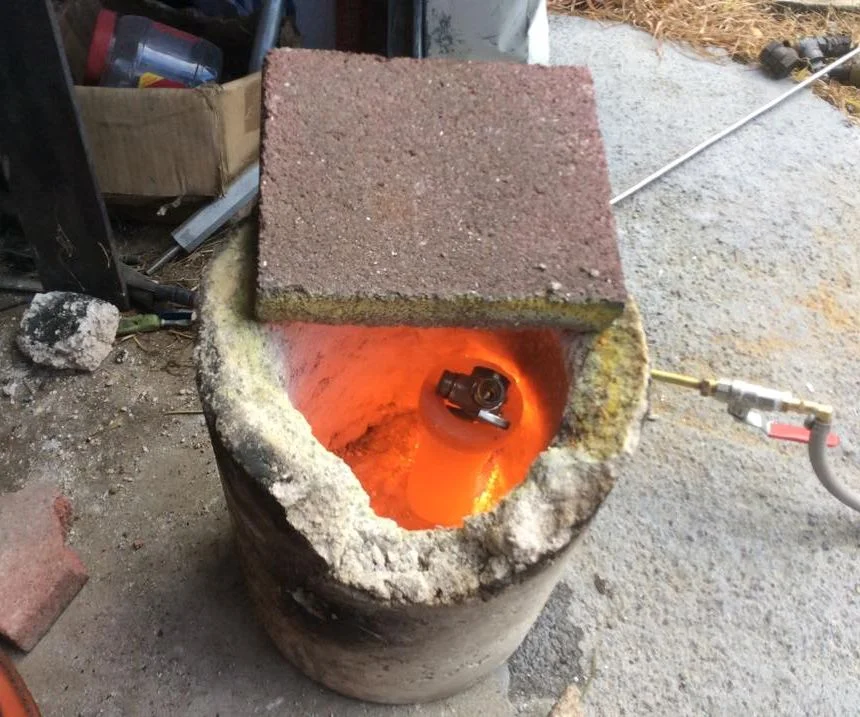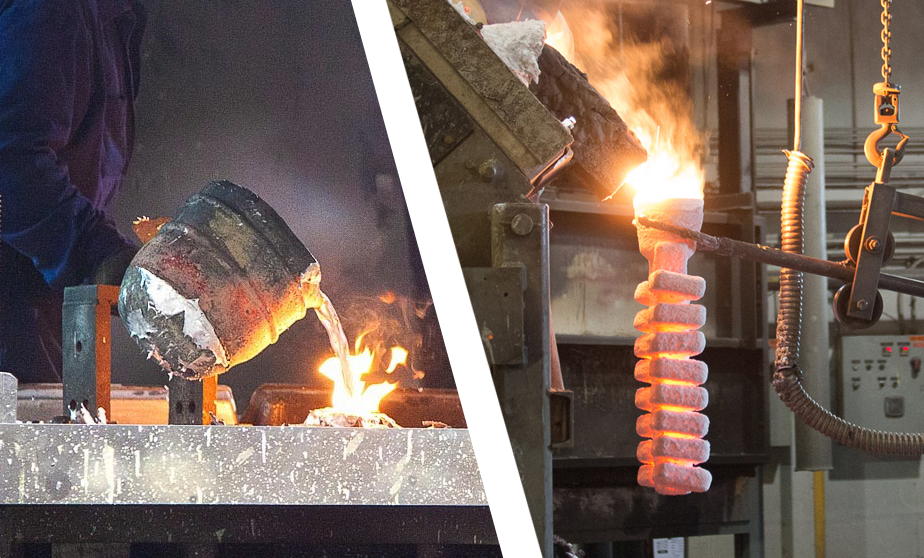Discover how modern Aluminum Casting is shaping today's manufacturing industry
Discovering the Vital Applications and Use Light Weight Aluminum Shop in Modern Production
Light weight aluminum shops play a necessary role in modern-day production, serving diverse industries with their distinct residential properties. From auto parts that boost gas effectiveness to aerospace frameworks that focus on weight, light weight aluminum's versatility is obvious. Its applications include construction and consumer electronic devices, highlighting its sturdiness and energy effectiveness. Nonetheless, the developments in light weight aluminum spreading strategies and future patterns call for a closer assessment, as they may redefine its effect on production.
The Role of Aluminum Foundries in Automotive Production
As the automotive industry significantly focuses on lightweight products to boost fuel effectiveness and efficiency, light weight aluminum factories have actually become vital factors to manufacturing procedures. These factories focus on generating elements that meet the strict demands of contemporary cars, such as engine blocks, transmission housings, and architectural elements. Light weight aluminum's positive homes-- such as high strength-to-weight ratio, rust resistance, and superb thermal conductivity-- make it a perfect selection for automobile applications.
Aluminum foundries utilize advanced casting techniques, including die casting and sand spreading, to create sturdy and complex parts. This ability permits manufacturers to enhance layouts for performance while decreasing weight. Using light weight aluminum also sustains sustainability goals, as it is highly recyclable and decreases power consumption in automobiles. By facilitating the combination of aluminum into automobile layout, factories play an essential function fit the future of the automotive market, promoting performance and innovation across the board.
Aerospace Applications: Lightweight Solutions for Trip
Aluminum foundries play a considerable duty in the aerospace field, where the need for lightweight materials is vital for improving gas efficiency and efficiency in airplane. The one-of-a-kind properties of light weight aluminum, including its high strength-to-weight proportion and rust resistance, make it an optimal selection for numerous aerospace elements. These parts include architectural parts, engine coverings, and touchdown gear, which add to overall aircraft performance.
The use of light weight aluminum alloys, especially those created with advanced spreading strategies, permits the manufacturing of elaborate layouts and complicated forms while lessening weight. Additionally, light weight aluminum's recyclability lines up with the aerospace industry's sustainability objectives, decreasing environmental impact. With continuous improvements in aluminum factory technologies, makers can enhance manufacturing procedures, causing enhanced performance and decreased costs. As the aerospace field significantly focuses on advancements that improve efficiency, aluminum shops will certainly stay important to establishing light-weight solutions for modern-day trip.
Building and Construction: Enhancing Structural Integrity
In the building and building and construction sector, a significant focus is put on boosting structural integrity through using aluminum. Understood for its high strength-to-weight proportion, light weight aluminum provides longevity without jeopardizing on weight, which is crucial in contemporary architectural designs. Its resistance to deterioration additionally ensures durability, making it a suitable product for numerous architectural parts, including beam of lights, frameworks, and cladding.
Light weight aluminum additionally facilitates cutting-edge layout possibilities, permitting designers and architects to create visually pleasing structures while keeping safety and security criteria. The material's convenience allows its application in both industrial and residential jobs, from skyscrapers to bridges. In addition, advancements in aluminum factory techniques have actually enhanced the accuracy of aluminum components, guaranteeing they fulfill rigid building ordinance. On the whole, the combination of light weight aluminum in building and construction not just enhances architectural integrity yet likewise adds to sustainable structure methods, offered its recyclability and energy-efficient manufacturing methods.
Consumer Electronic Devices: The Increase of Light Weight Aluminum in Modern technology
In the domain name of customer electronic devices, aluminum has gotten prestige because of its lightweight style benefits and exceptional thermal conductivity. This change not just improves item portability however also improves device efficiency by successfully dissipating heat. As modern technology remains to evolve, the duty of aluminum in producing sleek and efficient tools is progressively considerable.
Light-weight Style Advantages
As consumer electronic devices progress, the need for light-weight yet sturdy products has surged, making aluminum an increasingly preferred choice amongst makers. Its reduced density permits the production of smooth devices that are easy to make use of and carry, substantially boosting mobility. The strength-to-weight ratio of light weight aluminum assurances that products can endure day-to-day damage without jeopardizing efficiency. Furthermore, the pliability of light weight aluminum enables manufacturers to create detailed forms and kinds, additionally adding to innovative looks and performance. This lightweight quality additionally plays an essential duty in energy efficiency, as lighter devices call for less energy to operate. Therefore, aluminum not just satisfies the advancing visual demands yet additionally aligns with the modern-day concentrate on sustainability in consumer electronics.
Thermal Conductivity Perks
Thermal conductivity is an essential element in the efficiency of consumer electronic devices, and aluminum master this domain. Its high thermal conductivity permits reliable heat dissipation, which is crucial for keeping optimal operating temperature levels in devices such as mobile phones, laptop computers, and gaming consoles. By helping with quick warmth transfer away from sensitive parts, aluminum helps protect against overheating, therefore enhancing efficiency and prolonging device longevity. The lightweight nature of aluminum matches its thermal properties, making it an excellent option for mobile modern technology. As makers progressively prioritize performance and power performance, aluminum's duty in thermal monitoring comes to be also a lot more substantial, leading to its growing adoption in modern-day electronic designs. This fad underscores aluminum's significance in consumer electronics development.
Marine Market: Corrosion Resistance in Harsh Settings
Deterioration resistance is an important aspect in the marine market, where devices and structures are regularly exposed to extreme deep sea atmospheres. Light weight aluminum, specifically in its alloy forms, see here provides substantial benefits in this respect. Its natural oxide go to this web-site layer provides a safety obstacle that avoids deterioration, making it perfect for vessels, docks, and various other aquatic applications.
Marine-grade aluminum alloys, such as 5083 and 6061, are especially made to endure the harsh impacts of deep sea and weather. These alloys not only stand up to rust however additionally maintain structural integrity and strength in time. Applications vary from hulls and superstructures of ships to parts in overseas systems.
The light-weight nature of aluminum further improves its viability, enabling enhanced fuel efficiency and simplicity of handling - Casting Foundry. As the marine sector continues to concentrate on durability and efficiency, aluminum stays a vital product selection for withstanding deterioration sought after marine setups
Innovations in Light Weight Aluminum Casting Techniques
While traditional light weight aluminum casting approaches have actually served the industry well, recent developments are transforming the landscape of aluminum production. Techniques such as 3D printing of cores and molds are acquiring grip, enabling rapid prototyping and reduced preparations. This development enables suppliers to develop intricate geometries that were formerly tough to attain with standard casting methods. Furthermore, improvements in die-casting technology, consisting of the usage of high-pressure die-casting (HPDC), have actually enhanced the precision and surface coating of cast aluminum components, bring about improved performance in numerous applications.
The fostering of investment spreading has actually enabled for better layout flexibility and minimized product waste. Technologies in alloy make-ups are also considerable, as they enhance mechanical residential properties and rust resistance. Overall, these developments not just improve manufacturing procedures however likewise add to even more lasting methods within the light weight aluminum foundry field, making it versatile to the developing needs of modern-day production
Future Trends in Light Weight Aluminum Foundry Manufacturing
The future of aluminum factory manufacturing is poised for significant improvement with automation, improving efficiency and precision in making processes. Lasting practices are significantly ending up being a priority, as shops seek to decrease their ecological effect while satisfying growing governing needs. Furthermore, advancements in alloy development will certainly enable the development of stronger, lighter products customized for varied applications, driving innovation in the industry.
Automation in Factory Processes

Sustainable Production Practices
An expanding emphasis on sustainable production techniques is improving the future of aluminum foundry manufacturing. Market leaders are increasingly embracing energy-efficient innovations and reusing efforts to decrease waste and reduce carbon footprints. Using recycled aluminum significantly lowers energy intake contrasted to main aluminum production, making it a preferred selection for ecologically mindful producers. Additionally, cutting-edge spreading strategies are being developed to boost product performance and minimize discharges. Business are also buying eco-friendly power sources, such as solar and wind, to power their operations sustainably. aluminum casting company. By incorporating these practices, the light weight aluminum foundry industry not only fulfills regulatory requirements but also reacts to customer need for greener products, eventually leading the way for a more sustainable manufacturing landscape
Advanced Alloy Growth
Innovations in light weight aluminum alloy development are readied to play a substantial duty in the future of shop manufacturing, especially as sustainability and performance demands rise. The market is progressively concentrating on creating high-strength, light-weight alloys that can hold up against extreme problems while lessening environmental impact. Scientists are exploring innovative make-ups, such as aluminum-lithium and aluminum-scandium alloys, which guarantee improved mechanical properties and lowered weight. Furthermore, the assimilation of innovative production methods, including additive manufacturing and precision casting, permits even more complicated geometries and decreased product waste. As regulative stress and consumer choices shift towards greener choices, the advancement of energy-efficient and recyclable alloys will be crucial. The future landscape of light weight aluminum factory production rests on these developments in alloy technology.

Regularly Asked Concerns
What Are the Environmental Influences of Light Weight Aluminum Factory Workflow?
Aluminum foundry operations can result in considerable environmental effects, consisting of greenhouse gas emissions, power intake, and waste generation. Furthermore, incorrect monitoring of contaminants may bring about dirt and water contamination, influencing regional ecosystems and areas.
Exactly How Does Light Weight Aluminum Recycling Affect Factory Processes?
Light weight aluminum reusing enhances factory procedures by offering a cost-effective basic material, reducing power intake and exhausts. This sustainable method raises effectiveness, reduces waste, and supports the circular economic situation, benefiting both suppliers and the atmosphere.
What Precaution Are Executed in Aluminum Foundries?
Light weight aluminum factories carry out numerous safety and security actions, consisting of individual safety devices, proper ventilation systems, regular safety and security training, fire prevention procedures, and devices maintenance procedures to minimize risks and ensure a risk-free working setting for all staff members.
Just How Do Foundries Guarantee Quality Assurance in Aluminum Spreading?
Shops guarantee quality control in aluminum casting via rigorous material assessments, accurate temperature level monitoring, standard treatments, and regular testing of cast items. These measures help preserve consistency, lower flaws, and fulfill sector requirements effectively.
What Are the Expense Consider Aluminum Shop Production?
Price consider aluminum factory production consist of basic material prices, power consumption, labor prices, tools upkeep, and overhead expenses. Additionally, production quantity and intricacy of styles substantially influence overall production costs and productivity.
As the vehicle industry significantly focuses on light-weight materials to improve gas performance and efficiency, light weight aluminum factories have actually become crucial factors to producing procedures. Aluminum shops play a significant function in the aerospace sector, where the demand for light-weight products is vital for enhancing fuel performance and performance in aircraft. Additionally, advancements in aluminum foundry techniques have boosted the precision of light weight aluminum parts, guaranteeing they satisfy stringent building codes. While conventional aluminum casting techniques have actually offered the industry well, current advancements are transforming the landscape of aluminum production. The use of recycled light weight aluminum considerably decreases energy usage contrasted to main light weight aluminum manufacturing, making it a preferred selection for environmentally mindful suppliers.